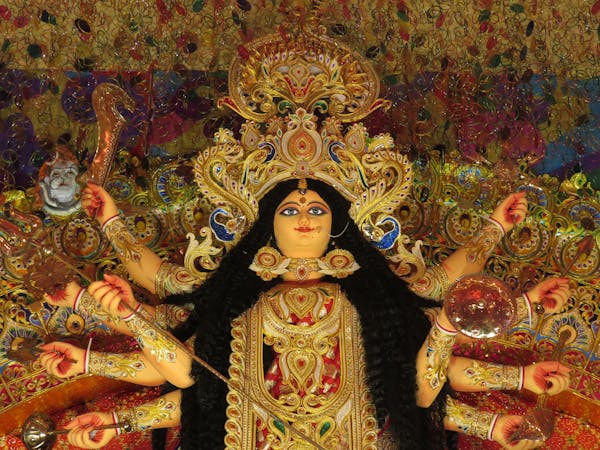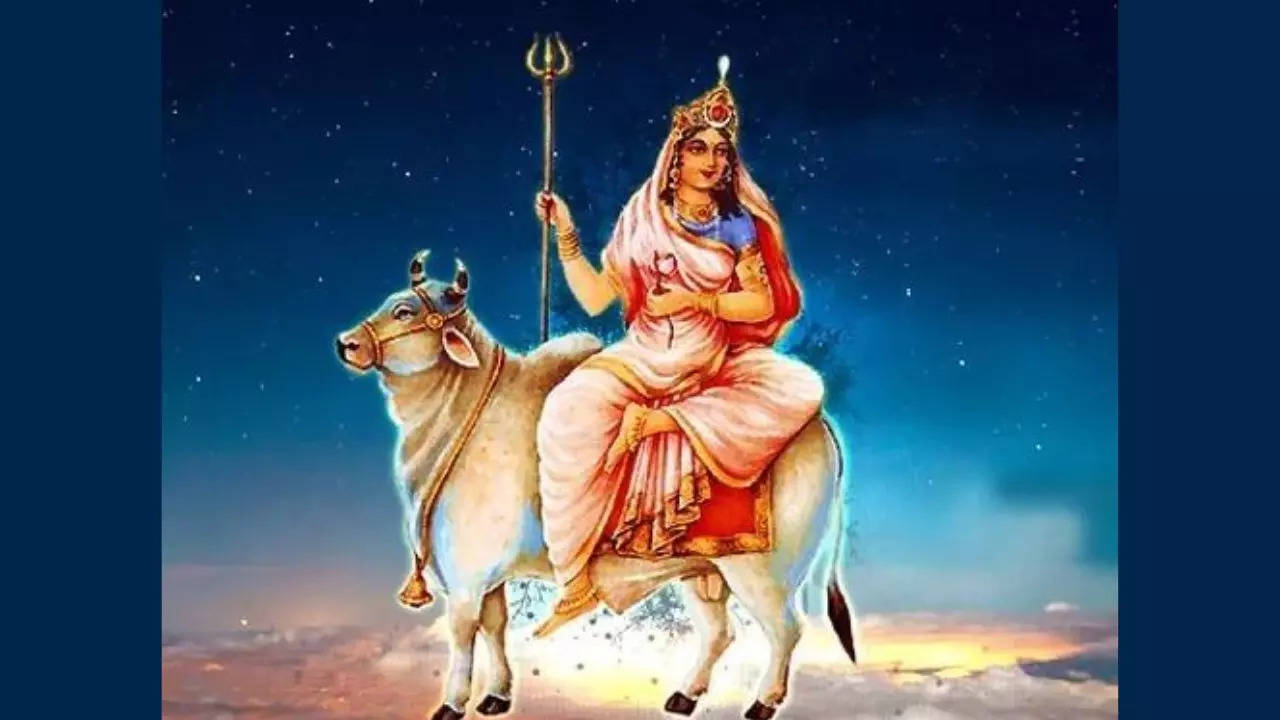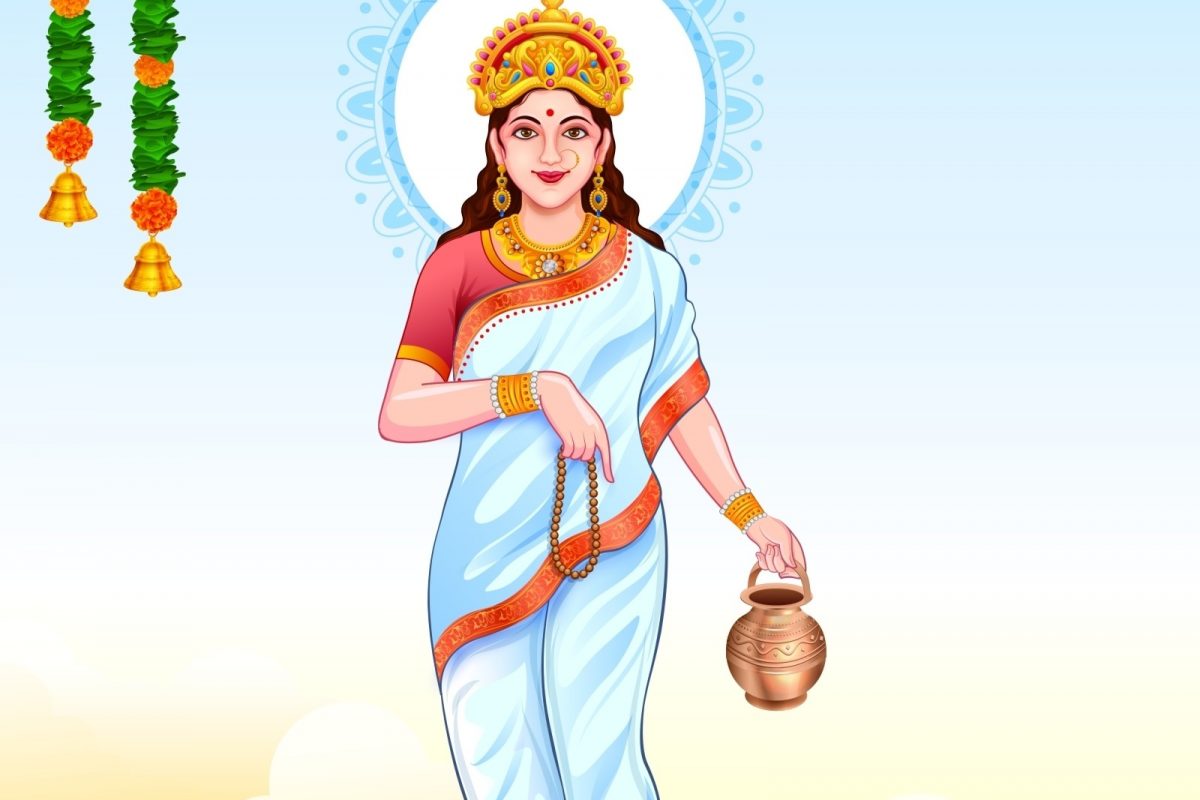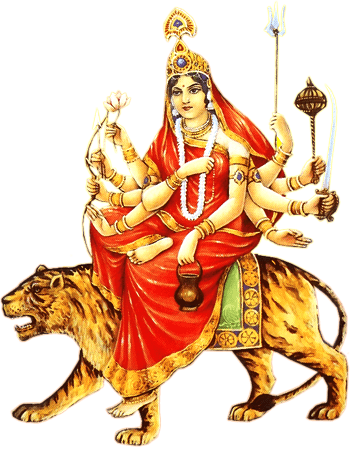Chaitra Navratri: There are several festivals in India. Hinduism has over 5,000 years of history and ancient texts that teach us about the meaning of life, social mores, and morality. Hinduism is a way of life, not just a method of worship. Prior to Chaitra Navratri, let us comprehend the meaning of “Chairta” Month.
What is ‘Chaitra’ Month? Is Chaitra Month Auspicious?

As per the Hindu scriptures, the creation of the world was initiated by Lord Brahma during the month of Chaitra, which is recognized as the initial month of the Hindu calendar. When fresh fruits and flowers begin to bloom, it’s a sign of a new season. The months of Chaitra occur in March and April, marking the beginning of the Sun’s journey through the Zodiac. Some people think that on the first day of Chaitra Navratri, Goddess Durga descended and that Brahma began the process of creating the cosmos at her request.
Another legend holds that during the nine days of Chaitra Navratri, Lord Shiva permitted his wife, Durga, to spend time at her parents’ home. It is said that the Goddess defeated the demon Mahishasura during these nine days. This represents the triumph of virtue over vice. Hindu women are expected to spend this fortunate time at their parents’ house.
What is Chaitra Navratri?
India celebrates the big and auspicious Hindu holiday of Chaitra Navratri with great zeal. Nine days of introspection, including prayer, meditation, and chanting, usher in the New Year. We become deeply relaxed and creative as a result. Admiring the beauty and natural world around us and realizing the divinity in all of creation.
How is Navratri Celebrated?
We worship the nine forms of Goddess Durga, known as Navadurga, during the festival of Navratri. Devi, also known as Durga mata, is a symbol for the all-pervading cosmic Energy that permeates all of creation. Some devotees only consume fresh fruit, milk, and water during their whole fast. We think that Goddess Durga gives us inner power and blessings, granting us the ability to fulfil all of our desires. The Kalash is installed, and a flame is lit for nine days during Chaitra Navratri.
Ram Navaratri
The celebration is also known as Ram Navaratri since Rama Navami, the birthday of Lord Rama, typically comes on the ninth day of Chaitra Navaratri.
What is the Importance of Chaitra Navratri?
During the festival, which commemorates Goddess Durga’s nine avatars, each day has a special meaning and a recommended colour for apparel. One of the most significant rituals during the Puja is offering flowers to the deities; each manifestation of the Divine Mother is associated with a specific flower. This adds to the allure and heavenly quality of the vibrant springtime.
Day 1: Devi Shailaputri:

Devi Parvati is the daughter of the mountain king Himalaya. She is the emanation of celestial consciousness from the apex. We ask God to grant us access to the highest possible level of awareness. Devotees wear yellow, which represents happiness, joy, and the natural world. Hibiscus is the particular flower that is offered.
Day 2: Devi Brahmacharini:

Achar is a term for conduct, and brahma is the term for spiritual consciousness. The goal of Brahmacharya is to become a celestial awareness. Today is particularly holy for meditation and discovering our inner divinity. This is Devi Parvati’s avatar, where she took on great penance to become the wife of Lord Shiva. She bestows long, calm, and pure lives to her followers, especially those who are going through a difficult marriage. Chrysanthemums are the special flower, and devotees dress in green.
Day 3: Devi Chandraghanta

She wears a half-moon on her head. During her marriage to Lord Shiva, Devi Parvati took on the appearance of Chandraghanta. Gananta denotes a bell, and Chandra the moon. The moon is a metaphor for our mind’s constant switching between ideas. The significance is that inner life force energy stabilizes and leads to serenity and harmony when our consciousness is aligned with the Mother Divine. Wearing grey, devotees present lotus blossoms.
Day 4: Devi Kushmanda:

Anda denotes an egg, Ku signifies tiny, and ushma means energy. Devi’s energy manifests as the entire universe that emerged from the cosmic egg. We are also bestowed with her divine energy, intelligence, strength, and power as we pray to her. Wearing orange—a colour that stands for brightness, happiness, and energy—devotees wear jasmine flowers.
Day 5: Devi Skandamata:

Mother of Skanda, this is Devi Parvati’s kind and maternal side. Worshipping this version of Devi results in emancipation, prosperity, money, power, and an abundance of wisdom. On this day of purity, people are encouraged to wear white. Yellow flowers, such as roses, are also provided, and bananas are given as bhog.
Day 6: Devi Katyayani:
It is a form that defeated Mahishasura, the demon. The gods’ wrath gave birth to her. She is the rage that emerges to bring creation back into harmony. All of our internal difficulties that stand in the way of our spiritual development are resolved by her. Wearing crimson, which symbolizes the Goddess’ wrath towards her foes, is a sign of devotion. Marigold is the flower that is offered.
Day 7: Devi Kalaratri:

There are two sides to Mother Nature. One is heartbreaking and terrifying. The other is tranquil and lovely. Devi, in her fiercest form, is Devi Kalaratri. Kalaratri is a symbol of the boundless dark energy that holds many universes. Since night gives our souls peace, rest, and comfort, it is also thought of as a feature of Mother Divine. We conjure fearlessness and a stress-free life by praying to her. Worshippers use dark blue attire, symbolizing the colossal dark force; the flower of choice is the Passiflora or Krishna Kamal.
Day 8: Devi Mahagauri:

Devi Mahagauri is a symbol of the tranquil and lovely side of the natural world. After appearing in front of her and being delighted by her penance, Goddess Durga became this shape. It was at this moment that Lord Shiva doused the Goddess in Ganga Jal, causing her skin to turn pale. She is the force that both energizes and frees our lives. Wearing pink, which stands for self-refinement and hope, is a sign of devotion, and Mogra (Arab Jasmine) blossoms are the linked flower.
Day 9: Devi Siddhidatri:

Siddhi (perfect) is the word. She makes everything in life perfect. She makes it possible to do the impossible. She bestows upon us her heavenly wisdom, vigor, vitality, and knowledge. Worn by devotees, the color violet stands for strength and aspiration, and the flower of the offering is Champa. Hinduism holds that we have always had a spirit, or eternal essence, within us.
This is where the universe’s energy comes from. During Navratri, we connect with our spirit through prayers, chanting, and meditation, which instills positive traits and drives out sloth, pride, obsessions, and appetites. The wealth we experience on a daily basis is an expression of Devi. Mother Divine is our mother, father, friend, spouse, daughter, and our Guru, among many other roles.
Final Words
During the nine days of Navratri, we honor the Devi and express our gratitude to the Mother Divine through the puja we perform. We temporarily give up all worldly pursuits and settle into intense meditation while at the puja. The enlightened ones will understand that each and every one of us possesses Devi energy or Shakti. Devi is not in a different place or universe.








